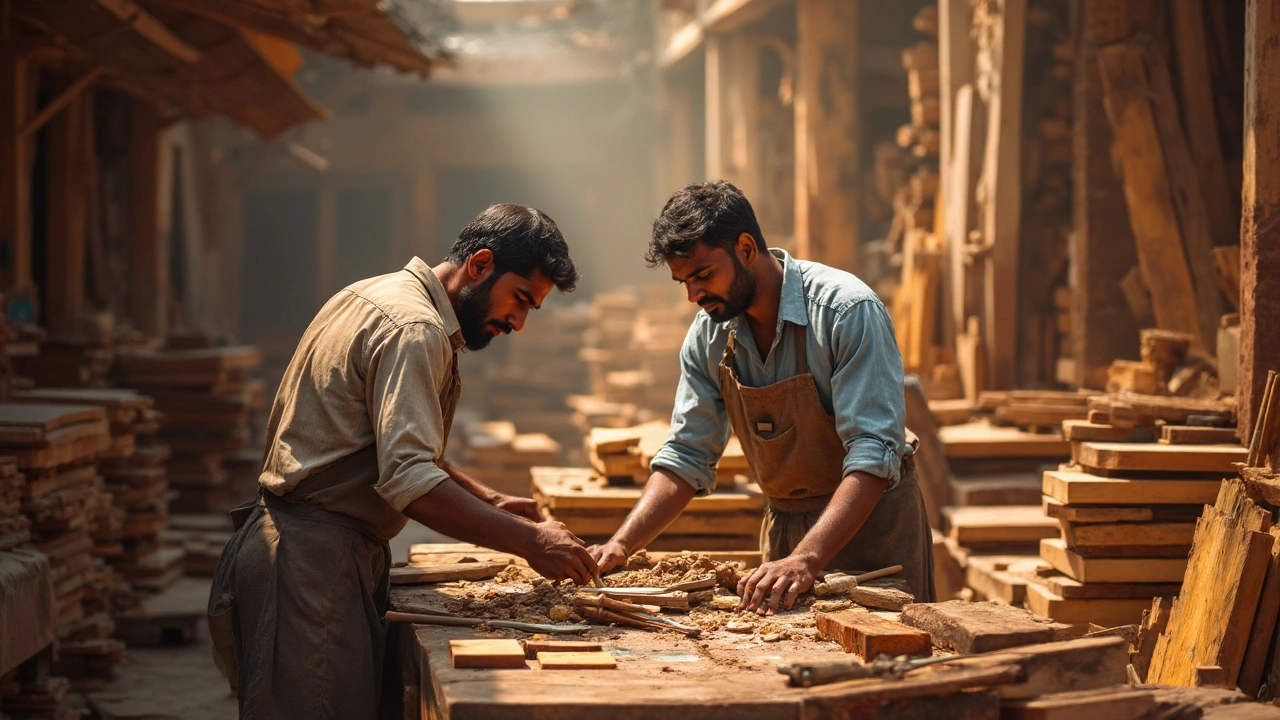Best Wood for Furniture: What to Choose and Why
If you’re buying or building a new table, chair, or cupboard, the wood you pick makes a huge difference. The right wood can keep a piece looking good for years, while the wrong one might crack or wear out fast. Below you’ll find the most popular woods, what they’re best at, and some quick tips for buying.
Hardwoods that Hold Up
Hardwoods are dense, strong, and usually more expensive, but they’re worth the price for high‑traffic furniture. Oak is a classic – it resists scratches and takes stains well, so it’s great for dining tables and kitchen cabinets. Walnut gives a rich, dark tone and works nicely for bedroom sets or statement pieces. Maple is light, smooth, and can handle heavy loads, making it a solid pick for dressers and worktables.
Softwoods and Budget‑Friendly Options
Softwoods like pine and fir are lighter and cost less, but they still make good furniture if you finish them properly. Pine is easy to work with and takes paint or varnish well, so you can customize the look. Cedar has a natural scent and resists moisture, perfect for outdoor benches or bathroom cabinets. Just remember to seal softwoods to keep them from denting quickly.
When you compare hardwoods and softwoods, think about where the piece will live. A coffee table that sees daily use benefits from oak or walnut, while a decorative shelf in a low‑traffic hallway can be pine.
Another factor is sustainability. Look for wood with FSC or PEFC certification – it means the forest was managed responsibly. Bamboo, technically a grass, is also a strong, eco‑friendly alternative that’s gaining popularity for modern furniture.
Aside from durability, match the wood grain to your style. Straight grain like maple gives a clean, modern vibe. Curvy grain in walnut adds warmth and character. If you love a rustic look, reclaimed oak with its aged patina can turn a simple table into a conversation starter.
Before you buy, feel the wood. A solid piece feels heavy and solid, while a hollow‑sounding board may have internal gaps or be made of low‑quality material. Check for knots, cracks, or warping – a few small knots are fine, but big ones can weaken the structure.
Finally, consider the finish. A clear polyurethane coat protects hardwoods from spills, while a matte oil finish lets the wood breathe and shows off its natural texture. For softwoods, a painted finish can hide imperfections, but make sure the paint is high‑quality to avoid chipping.
Choosing the best wood for furniture doesn’t have to be confusing. Pick a hardwood like oak, walnut, or maple for durability, go with pine or cedar for budget‑friendly projects, and always check for sustainable sourcing. With the right wood and finish, your furniture will stay strong, look great, and fit your style for years to come.

Best Trees for Furniture in India: The Top Choices for Quality Wood
Curious about which tree makes the best furniture in India? This article breaks down the top choices for furniture makers, including their pros and cons. You'll get practical tips on spotting genuine wood and advice from real craftsmen in the industry. Find out how climate, price, and wood availability shape what you see in showrooms. There's even a reality check on common myths and everyday mistakes buyers make.
